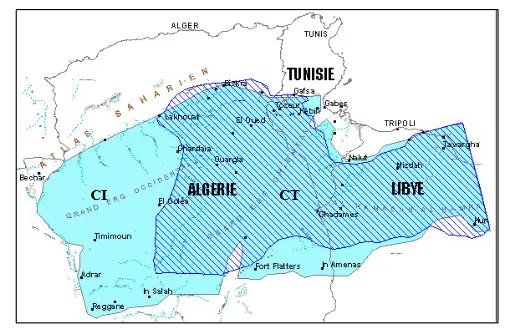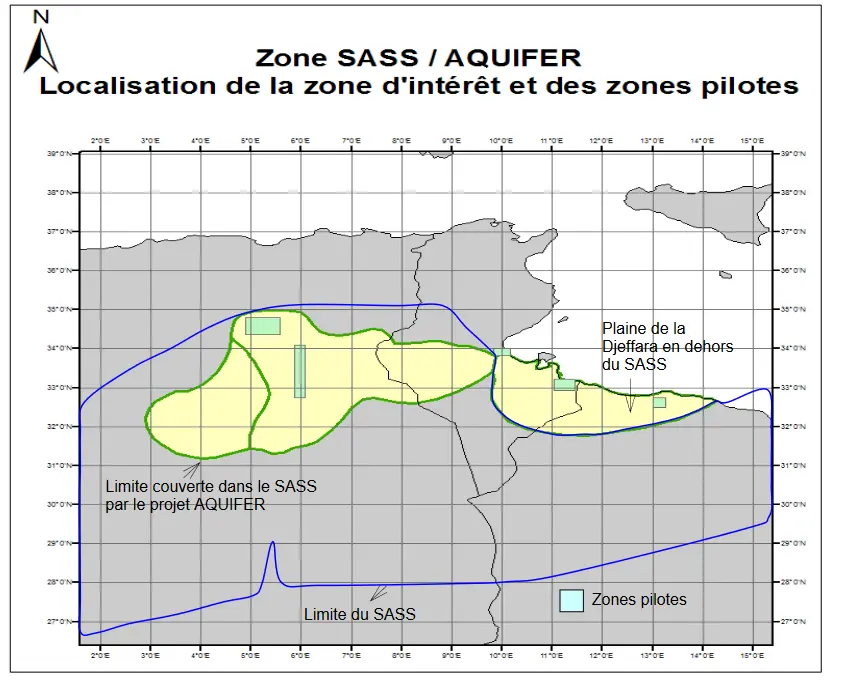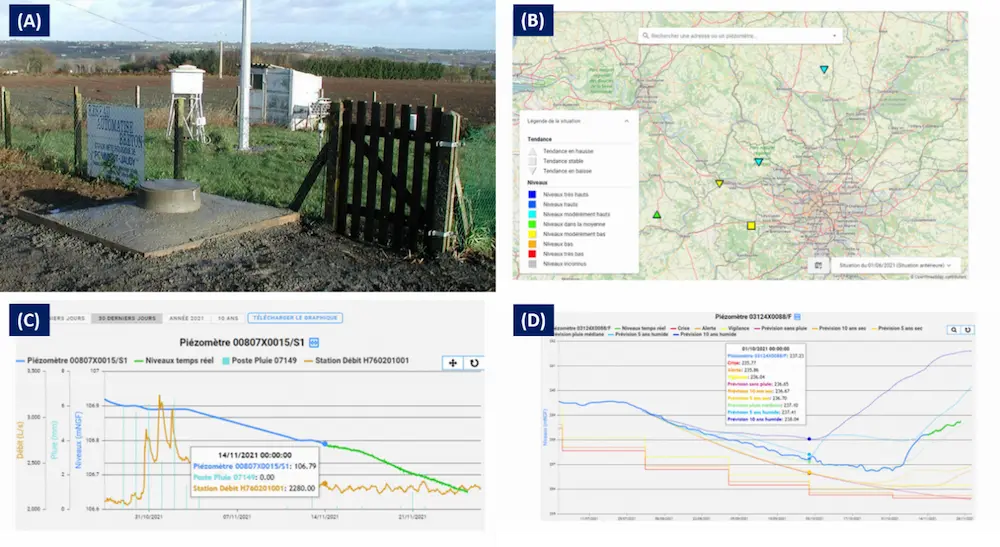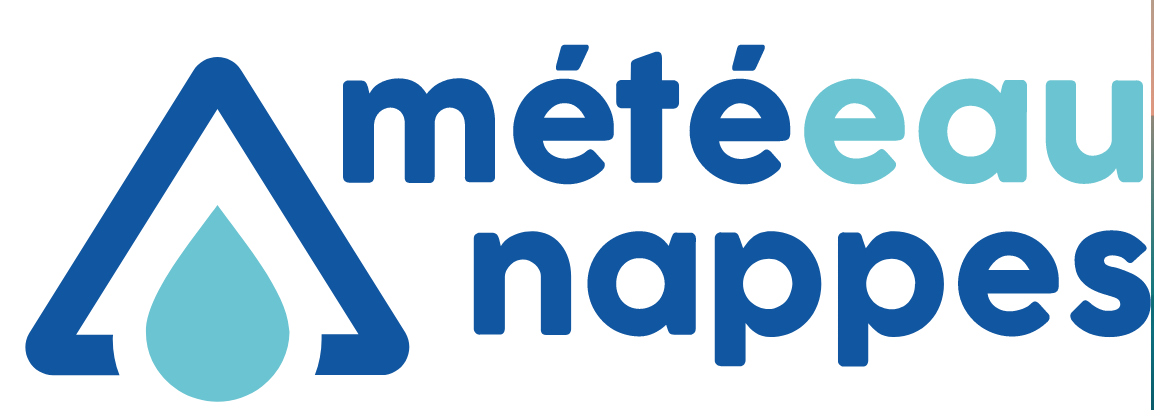The scientific community recommends a substantial improvement in the knowledge of aquifers, the establishment of reliable monitoring networks and a greater involvement of the administration and users to achieve a sustainable management of aquifers. The main objective...
AquaNES
AquaNES
Advanced monitoring and modeling interface for an optimized design and operation of the MAR/SAT system of Agon-Coutainville (France)
AquaNES
Download the practice
People in charge of the innovative practice :
Marie PETTENATI – m.pettenati@brgm.fr
AquaNES, a project launched in 2016 developed water and wastewater purification techniques, combining industrial and natural treatment processes. By demonstrating the impact and benefits of the different systems studied, the AquaNES project aimed to promote more sustainable water purification techniques to manage situations of water scarcity or excess and control the presence of micro-pollutants in the water cycle. Within the framework of the Horizon 2020 program, the project has brought together thirty scientific, industrial and academic partners involved in the water sector. Among its thirteen pilot sites, AquaNES launched the monitoring of subsoil water at the Agon-Coutainville (Manche) wastewater treatment site in March 2016, with the installation of observation piezometers to monitor the quality of natural filters. The site is operated by the company SAUR which manages the city’s wastewater. The system uses an activated sludge system (biological purification by micro-organisms) coupled with bio-filtration processes by reed bed and sand dune. This system makes it possible to protect the shellfish production area on the estuary by not discharging the wastewater directly into the sea. Also, the purified water allows for the artificial recharging of the coastal groundwater table with fresh water, and is used to irrigate the golf course on an occasional basis.
The objective of the studies conducted at this demonstration site is to improve the quality and quantity of purified water by monitoring, managing, and modeling water and transfer processes in the soil and subsoil. The works included advanced chemical analysis and on-line salinity monitoring. The relevance of this combination of industrial and natural processes is studied in the framework of the AquaNES project through risk and life cycle analyses of the system. The valorization of the acquired data contributes to innovation in the water industry, and allows for efficient management of facilities within the water treatment and reuse sector.
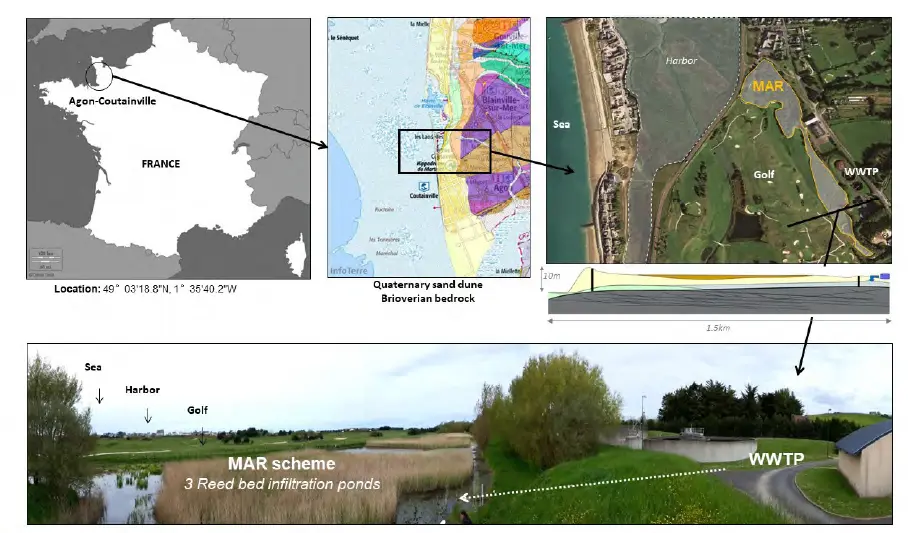
Figure 1 : MAR/SAT system of Agon-Coutainville in France.
Responsible entity
The BRGM (French National Geological Survey) is the coordinator of a work package on aquifer management. It is the French public establishment of reference in the applications of Earth sciences to manage the resources and risks of the soil and subsoil. BRGM was created in 1959. It is a public establishment of an industrial and commercial nature (EPIC). Placed under the supervision of the Ministries of Research, Ecology and Economy, it is based in Orléans in France. BRGM’s work covers several activities: scientific research, expertise, innovation and transfer, analysis and experimentation, mine prevention and safety, higher education, continuing professional education, dissemination of knowledge and open science. It employs more than 1,000 people, including more than 700 engineers and researchers, in its 27 regional offices in metropolitan and overseas France. Its teams operate in some 30 countries. Six major scientific and societal issues structure BRGM’s scientific strategy: geology and knowledge of the subsoil, groundwater management, risks and land use planning, mineral resources and the circular economy, energy transition and the underground space, data, services and digital infrastructures.
Detailed explanation
The integrated system is based on the technical treatment by an activated sludge process in the wastewater treatment plant (WWTP), consisting of a pre-screening, a pumping station, a buffer tank, a rotary screen, oil and sand separators with sand classifiers (separator basins), two aeration basins (4,000 m3), a 470 m² clarifier, a metering channel for the treated water. The WWTP treats and infiltrates via the SAT system ~2,000 m3/day varying from 500 to 5000 m3/day depending on the season and vacations. In winter, the flow is significantly higher because the WWTP also receives rainwater. On the basis of an estimated capacity of 35,300 equivalent inhabitants, the Agon-Coutainville WWTP has a maximum DBO5 treatment capacity of 2,120 kg/day. The treated urban wastewater flows by gravity to one of the three infiltration basins located outside the WWTP. Once in the infiltration basins, the treated wastewater infiltrates through the reed beds to recharge the coastal aquifers composed of a 2 to 10 m layer of Quaternary sand. The three infiltration basins are flooded alternately throughout the year.
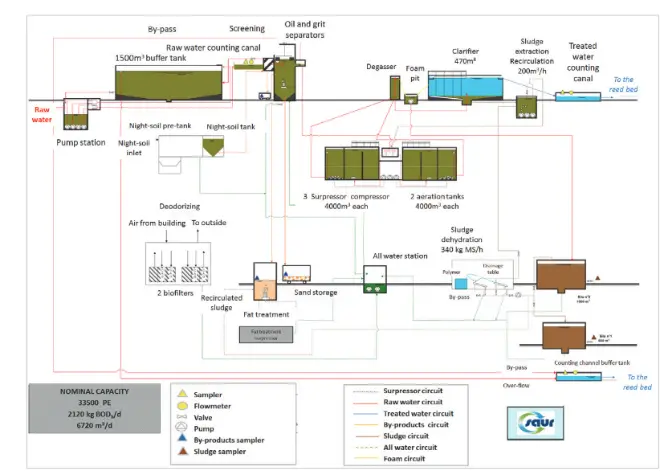
Figure 3 : Treatment process on the Agon-Coutainville site.
The objective of this demonstration site is to improve monitoring strategies and process modeling to evaluate the effectiveness of combining natural and engineered treatment systems in a coastal area and for reuse by:
- Demonstrating the effectiveness of secondary wastewater treatment combined with reed bed filtration with MAR/SAT on groundwater quality and quantity;
- Introducing new monitoring, data management, and subsurface modeling methods, including advanced chemical and isotopic analyses, to understand the ability of SAT to improve water quality;
- Observe the fate of viruses/pathogens and other contaminants in treatment systems;
- Evaluate the utility of the system in limiting saline intrusion in this sensitive coastal area using a hydrogeological/reactive transport model representing the state of the system;
- Represent all of these interrelationships in a customized technology and communication tool.
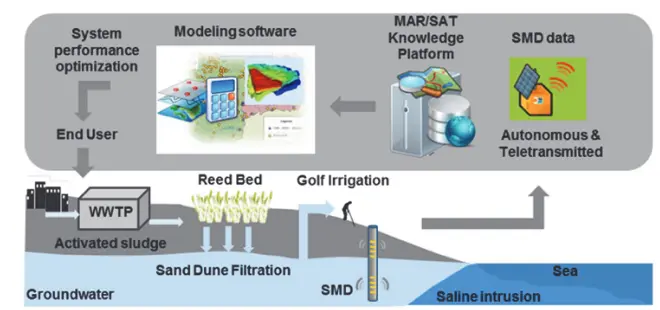
Figure 4 : Conceptual diagram of the innovative practice.
Future outlook
The short-term outlooks are to develop tools oriented towards governance, notably the implementation of tertiary treatment solutions on a part of the watershed, and to weight the criteria by communicating with the ARS, the Water Agencies, and the communities.
In the near future, recharge and reuse sites using non-conventional water will have to be the subject of a “site-specific” analysis in order to estimate the possibility of storage, reuse, and the associated environmental costs/benefits and co-benefits.
Institutional setting
The project partners are BRGM, Antea Group, ImaGeau, MicroLan, BioDetection Systems, Cranfield University, Berlin Water Competence Centre, with the help of the municipality of Agon-Coutainville, SAUR and the Coutainville golf course.
Geographical setting
The demonstration site is located in Agon-Coutainville. The commune of Agon-Coutainville is located in France in Normandy, along the western coast of the Manche, between the Pointe de la Hague and the Bay of Mont Saint Michel. The demonstration site is located near a shellfish farming area and consists of a full-scale operational wastewater treatment plant and a MAR/SAT system. The secondary treated wastewater is discharged into a natural reed bed from which it infiltrates the coastal aquifer. The extracted water is then used for golf course irrigation.
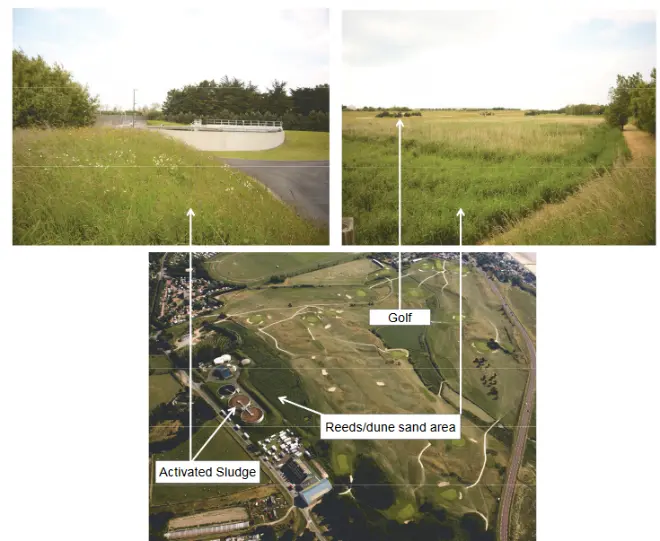
Figure 2 : Wastewater treatment plant of Agon-Coutainville.
Historical overview
2016: European funding under the Horizon Europe program, approval number 689450.
One of the key factors that allowed the implementation of this practice is the site of Agon-Coutainville, which is a fragile environmental area since the 90’s and for which it was essential to avoid any discharge. At this site, there was a natural reed bed (2000 m²) in which it was decided to infiltrate wastewater treated by an activated sludge treatment.
The obstacles to the implementation of this solution were mainly financial. Indeed, the financing levers were not well adapted for a reproduction of the approach at the time. On the other hand, the AquaNes project was developed on a pilot scale over a period of 3 years.
Evidence of benefits from implementation
There are advantages of using this innovative practice including a financial gain. The data collected confirm that the SAT system results in an additional reduction in salinity (P50 Cl: 550 mg/L for the WWTP outlet, 125 mg/L in the observation wells), in Escherichia Coli (E.Coli) concentrations up to 2.5 orders of magnitude and in regulated nutrient concentrations (e.g. NO3, Ptot) up to one order of magnitude. Micropollutants, primarily discharged from the WWTP, generally had higher (median) concentrations in the treated wastewater (WWTP outlet), exceeding the recommended environmental quality standards (EQS) for carbamazepine (CBZ) and diclofenac (DIC). The SAT system, in combination with natural recharge, significantly reduces concentrations of contaminants of concern such as benzotriazole, CBZ, and DIC concentrations, which overall fall below the recommended threshold values defined by the EQS. The decrease in concentrations is likely due to the combined effect of dilution of treated wastewater in the aquifer and biogeochemical reactions (sorption and/or degradation).
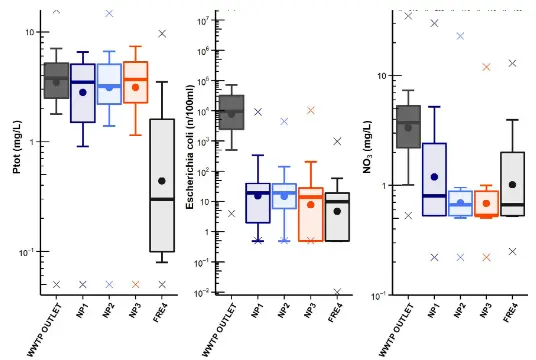
Figure 5 : Concentration of regulated nutrients in WWTP outlet effluent and groundwater for observation wells.
Replication potential in SUDOE region
The project has a reproducible character, mainly at a large scale (big cities). The human resources implemented require different levels of complementary expertise: researchers, research engineers, technicians, computer scientists, geochemists, hydrogeologists.
Key points of the innovative method
> Combination of natural processing and engineered systems
> Monitoring and modeling interface
> Controlled recharge of an aquifer
Acknowledgements
The innovative practice was suggested by Marie PETTENATI (BRGM) who also participated in the interview.
References
Unesco (2021). Managing aquifer recharge. A showcase for Resilience and Sustainability. Case study 16: soil aquifer treatment system to protect coastal ecosystem in Agon-Coutainville (Normandy, France). https://unesdoc.unesco.org/ark:/48223/pf0000379962
INTERNET REFERENCES:
Fiche de demonstration du site d’étude: http://www.aquanes-h2020.eu/UserFiles/files/Site%208%20Agon%20Coutainville.pdf
Projet AquaNES : http://www.aquanes-h2020.eu/Default.aspx?t=1593
aquifer
news
Discover more on the Aquifer project news and on aquifer management
aquifer news
Description and objectives of the project
Information on the project
The Llobregat Delta Water Users' Community has designed recharge basins in Molins de Rei to recharge the Baix Llobregat aquifer. View of one of the reloading basins during the test phase The Llobregat Delta Water Users' Community is one of the nine partners in the...
Success stories in groundwater management
Compilation of groundwater management success stories completed. Throughout April, the 30 cases of innovative practices in groundwater management have already been selected by the clusters participating in the project: PPA, CWP and AV. The task started with the...
PROPOSE AN
INNOVATIVE PRACTICE
You are in charge of an innovative practice regarding aquifer management and you want to referenced it on the Aquifer platform ?
Fulfill the form and propose it to the Aquifer partners.
THE EBOOK
Aquifer offers a range of innovative water management practices. You can download all our fact sheets here.
e-book of innovative practices
DOCUMENTATION
To go further on information related to the management of aquifers
